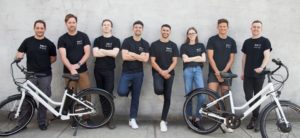Elon Musk’s commercial rocket company SpaceX has another successful human space launch to its credit in collaboration with NASA after a good take-off and orbital delivery of its Crew Dragon spacecraft on April 23. This is the first-ever four-astronaut crew propelled toward orbit by a rocket booster recycled from a previous spaceflight. The spacecraft docked with the International Space Station early on April 24.
The Dragon took off aboard a Falcon 9 rocket from Cape Canaveral in Florida at 5:49 AM EDT. Onboard were four astronauts, including NASA’s Megan McArthur and Shane Kimbrough, as well as JAXA’s Akihiko Hoshide and the ESA’s Thomas Pesquet. The crew has an attack helicopter pilot, a former Air France pilot, a Japanese rocket scientist and an oceanographer.
For the automated flight, SpaceX replaced some valves and thermal shielding. It installed new parachutes on the capsule that has been named Endeavour after NASA’s retired space shuttle. The spacecraft is otherwise the same as the one that flew earlier. Rapid reusability is critical to Elon Musk’s effort to open space to everyone, land NASA’s next moonwalkers and, his loftiest goal by far, build a city on Mars.
This week…
– Four Crew-2 astronauts launch on the SpaceX Crew Dragon & arrive at @Space_Station
– Our Ingenuity #MarsHelicopter makes history with its first flight
– Hearings to confirm Sen. Nelson as our next administratorWatch: https://t.co/MmihHkIhHR pic.twitter.com/sTu9S2l4sH
— NASA (@NASA) April 24, 2021
Four Astronauts from three nations onboard
The NASA astronauts onboard Dragon hail from the United States, Japan, and France reached the International Space Station early on April 24. The astronauts will spend six months at the ISS. French astronaut Thomas Pesquet is the first European to fly on a SpaceX Crew Dragon.
It is the third NASA crew that SpaceX has launched to the ISS in less than a year.
The program is part of its multibillion-dollar contract with the US space agency under the Commercial Crew Program. The first mission launched was launched in May 2020, ending nine years of American reliance on Russian rockets for ride.
The launch is a major milestone for Europe, which named the mission “Alpha” after the star system Alpha Centauri. “This is really the golden era for us in terms of exploitation of the International Space Station,” Frank De Winne, head of ISS program for the European Space Agency (ESA), told AFP.
Germany’s Matthias Maurer and Italy’s Samantha Cristoforetti are set to follow Pesquet on SpaceX missions, this fall and next spring, respectively. The next module of the ISS, built by Russia, should reach the station in July and will include a robotic arm built by ESA that Pesquet will help make operational, added De Winnie.
































